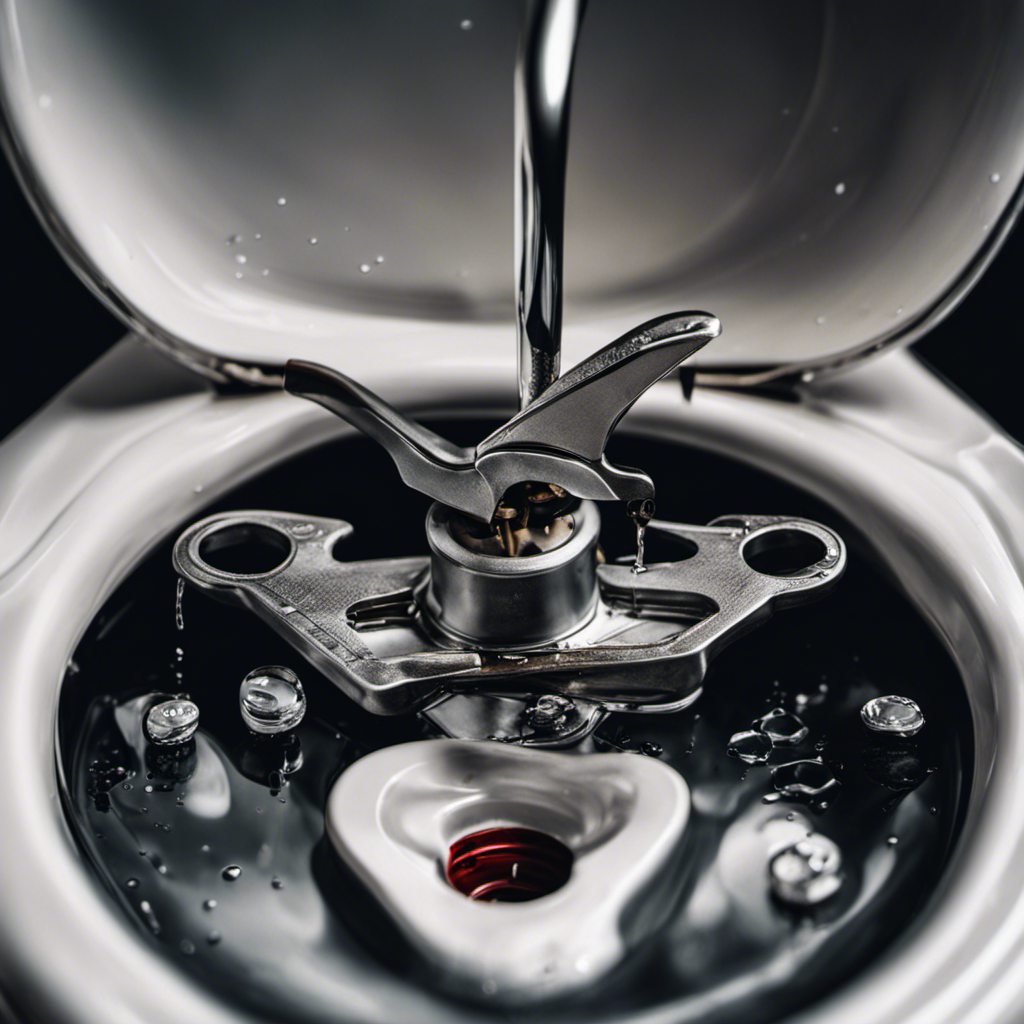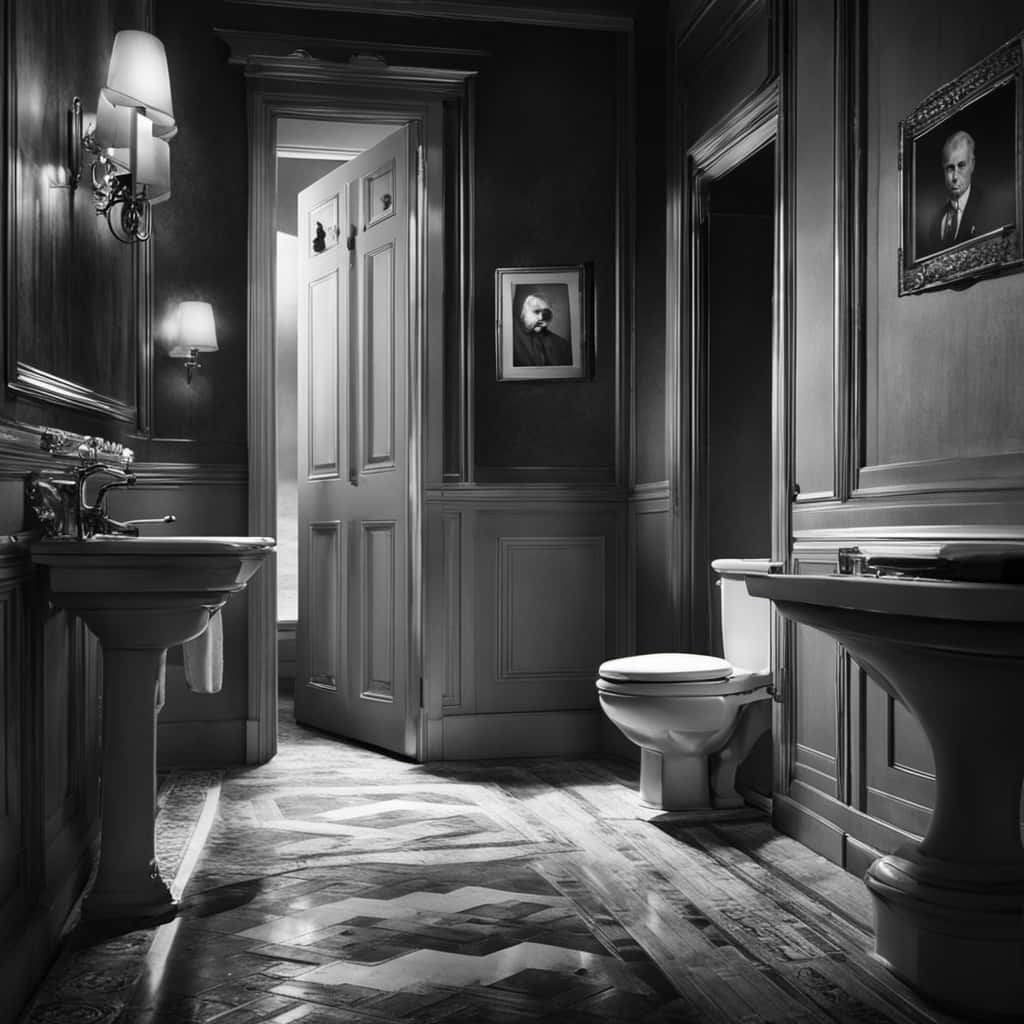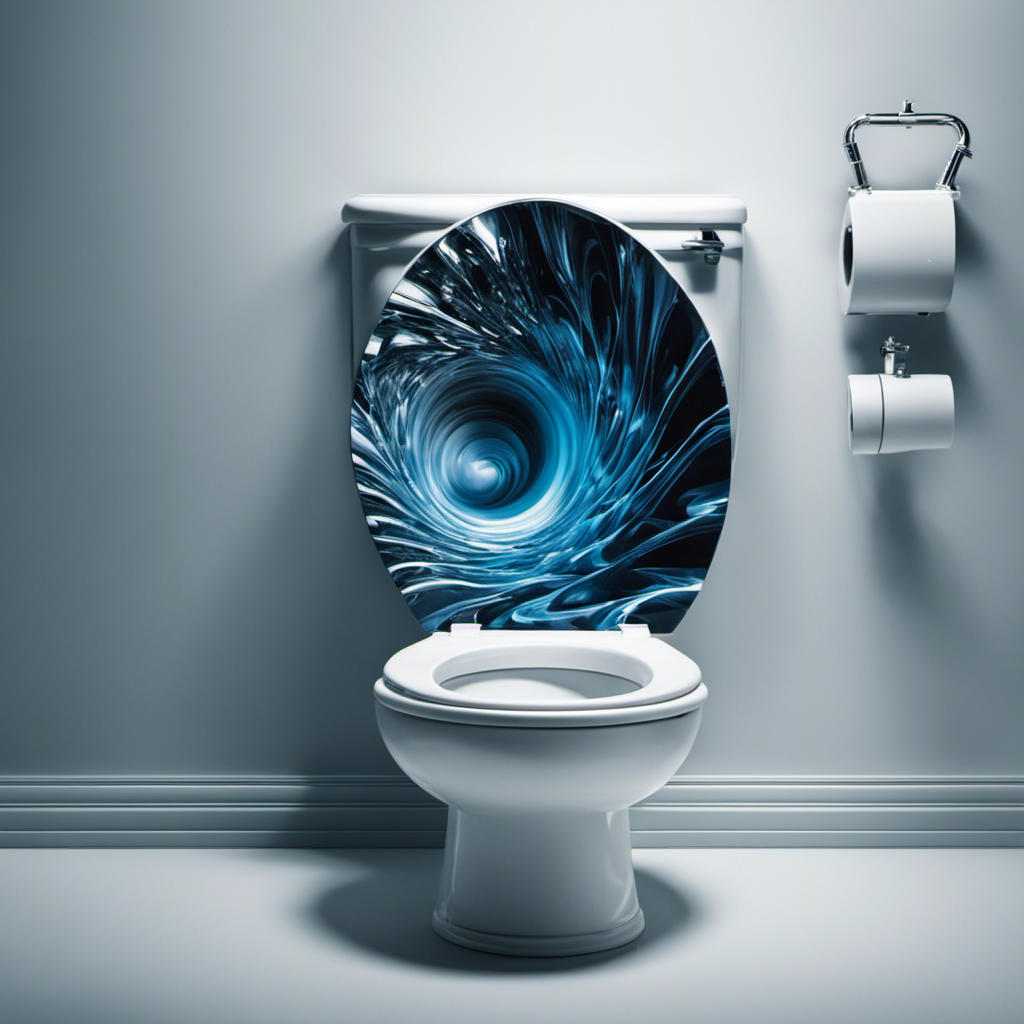Is your toilet emitting an unpleasant high-pitched sound when you flush? Don’t fret, for we are here to guide you through the intricacies of this common plumbing problem.
In this article, we will delve into the possible causes of a squealing toilet, equipping you with the knowledge to identify and resolve the issue. From faulty fill valves to loose flappers, we will address each potential culprit with clear and concise instructions.
So sit back, relax, and let’s silence that squeal once and for all.
Key Takeaways
- Possible causes of toilet squealing include loose fill valve, faulty ballcock assembly, worn-out flapper valve, and damaged flush valve.
- Troubleshooting steps may include consulting a professional plumber, checking for leaks, ensuring proper float adjustment, and cleaning any debris causing clogs.
- Common fill valve issues include leaks, continuous running water into the toilet bowl, and high-pitched squealing noise during or after flushing.
- To fix a loose flapper, turn off the water supply, adjust the chain length, and securely reattach the chain to the flush lever.
Possible Causes of Toilet Squealing
One possible cause of your toilet squealing could be a loose fill valve. The fill valve is responsible for controlling the water flow into the toilet tank. When it becomes loose, it can create vibrations and cause the squealing noise you are experiencing.
Another potential cause could be a faulty ballcock assembly. This assembly regulates the water level in the tank and if it is not working properly, it can result in a high-pitched squeal.
Additionally, a worn-out flapper valve or a damaged flush valve can also lead to the squealing sound.
To fix the squealing, start by checking the fill valve and tightening it if necessary. If the problem persists, consider replacing the ballcock assembly, flapper valve, or flush valve.
It is recommended to consult a professional plumber for further assistance in diagnosing and resolving the issue.
How to Identify a Faulty Fill Valve
Having a faulty fill valve in your toilet can cause a range of issues. These issues include constant running water and weak flushes. Common fill valve issues include leaks, clogs, and malfunctioning float mechanisms.
To troubleshoot a fill valve problem, start by checking for leaks. Make sure that there are no visible signs of water leaking from the valve. Next, ensure that the float is properly adjusted. The float should be set at a level that allows the tank to fill to the appropriate water level. If the float is too high or too low, it can cause problems with the fill valve.
Lastly, clean any debris that may be causing a clog. This can be done by removing the fill valve and inspecting it for any blockages. If you find any debris, clean it out thoroughly before reattaching the valve.
Common Fill Valve Issues
When your toilet squeals when you flush it, it’s often due to common fill valve issues. The fill valve is responsible for regulating the water level in your toilet tank. Over time, it can wear out or become faulty, causing various problems.
One of the main causes of toilet leaks is a worn-out fill valve. If you notice water continuously running into the toilet bowl, even when it’s not being flushed, it’s a clear sign of a faulty fill valve. Another sign is when your toilet makes a high-pitched squealing noise during or after flushing. This indicates that the fill valve is not sealing properly, allowing water to escape.
To resolve these issues, you can try adjusting the fill valve or replacing it altogether. It’s important to address these problems promptly to prevent further damage and water wastage.
Troubleshooting Fill Valve
If your toilet is making a high-pitched noise after flushing, it could be a sign of a faulty fill valve. To troubleshoot and potentially resolve this issue, you can follow these steps:
-
Check the gasket: Inspect the gasket between the fill valve and the toilet tank. If it is worn or damaged, it may be causing the high-pitched noise. In this case, replacing the gasket should solve the problem.
-
Adjust the float: The float in the toilet tank controls the water level. If the float is set too high, it can cause the fill valve to make noise. Adjust the float to ensure it is at the correct height, usually around an inch below the top of the overflow tube.
-
Clean or replace the fill valve: Over time, debris can accumulate in the fill valve, causing it to malfunction and produce noise. Try cleaning the valve first, but if the noise persists, consider replacing the fill valve altogether.
By following these troubleshooting steps, you can identify and potentially resolve the issue of a high-pitched noise coming from your toilet after flushing.
Steps to Fix a Loose Flapper
To fix a loose flapper, you’ll need to first turn off the water supply to the toilet.
A faulty flapper can cause various issues with your toilet, such as leaks, water wastage, and inconsistent flushing. Signs of a faulty flapper include a continuous running toilet, water leaking into the bowl, or a weak flush.
To tighten a loose flapper, start by removing the tank lid and locating the flapper chain. Adjust the chain length by either tightening or loosening the chain’s hook. Ensure that the chain has enough slack for the flapper to fully close but not too much that it gets tangled or caught.
Once the chain is adjusted, reattach it to the flush lever and make sure it is secure. Finally, turn the water supply back on, and test the toilet to ensure the flapper is functioning properly.
Troubleshooting a Faulty Flush Valve
One way to troubleshoot a faulty flush valve is by checking the water level in the tank. Here’s a step-by-step guide to help you troubleshoot and fix a running toilet:
-
Start by removing the tank lid and inspecting the water level. Ideally, the water should be about 1 inch below the top of the overflow tube. If it’s too high or too low, it can cause problems with the flush valve.
-
Adjust the water level by turning the float adjustment screw or bending the float arm. This will help regulate the amount of water entering the tank.
-
If adjusting the water level doesn’t solve the issue, the flush valve may be faulty. Inspect the flush valve for any signs of damage or debris. Clean or replace it if necessary.
Addressing Water Pressure Issues
Check the water pressure in your home to address any issues that may be causing low flow in your faucets and showerheads.
When it comes to toilets, low water pressure can affect the flushing efficiency, leading to inadequate flushing or even a toilet that won’t flush at all. To adjust the water level in your toilet tank, locate the fill valve and turn the adjustment screw clockwise to lower the water level or counterclockwise to raise it.
In addition to low water pressure, mineral deposits can also cause flow issues in your toilet. To check for mineral deposits, remove the tank lid and inspect the flush valve and rim holes for any build-up. If you see deposits, use a brush and vinegar to gently scrub away the minerals.
Preventative Measures for Future Toilet Squealing
Addressing low water pressure and inspecting for mineral deposits are effective ways to prevent future occurrences of a squealing sound when using the toilet. Here are three preventative measures you can take to maintain your toilet and avoid the annoying squealing noise:
-
Check the water pressure: Ensure that your water pressure is at an adequate level. Low water pressure can cause the toilet fill valve to vibrate and produce a squealing sound. If the pressure is low, you may need to adjust the water supply or consult a professional plumber.
-
Inspect for mineral deposits: Mineral deposits, such as lime scale, can accumulate in the toilet tank and cause the fill valve to malfunction. Regularly inspect and clean the tank to prevent these deposits from affecting the valve’s performance.
-
Perform regular maintenance: DIY toilet repairs are essential for preventing future issues. Clean the inside of the toilet tank, check and replace any worn-out parts, and ensure proper alignment of all components.
Conclusion
In conclusion, it is crucial to investigate the truth behind a theory that evokes emotions in you when dealing with a squealing toilet. As a plumbing expert, I have provided you with a deep understanding of the potential causes of this issue. These causes include a faulty fill valve, loose flapper, faulty flush valve, or water pressure problems.
By following the clear and concise steps I have outlined, you can resolve the problem and prevent future toilet squealing. Remember to maintain a professional tone and seek assistance if needed. Trust in your knowledge and expertise to overcome this plumbing challenge.










